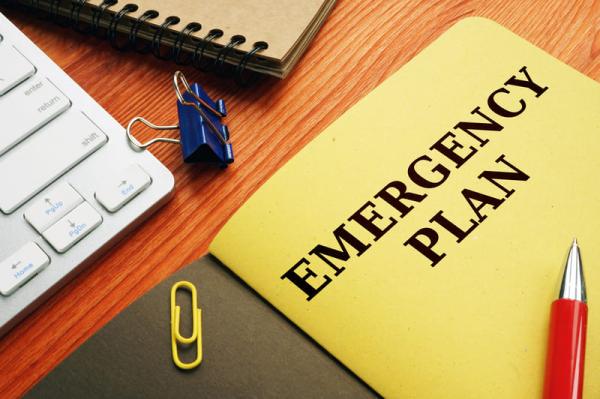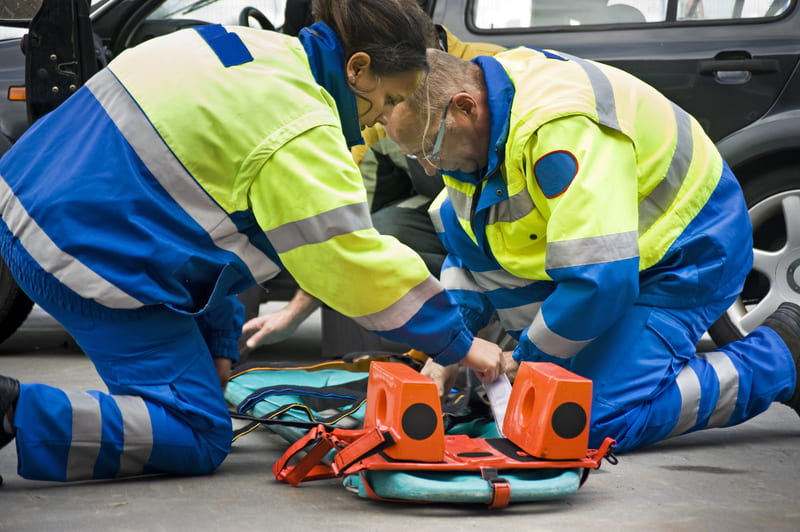Blog Post
Safety Officer Course: The Safety Officer's Guide To First Response & Emergency Preparedness

One of the most essential skills you can learn through a safety officer course is emergency preparedness, especially if you work in a high-risk environment. Whether there is a natural disaster, workplace accident or any other catastrophe, it is crucial that safety officers know how to manage a crisis before, during and after it occurs.
As a health & training facility, EMCARE provides students with valuable skills and professional modules on how to keep others safe. In this quick read, we'll be breaking down the safety officer�s guide to crisis management and the importance of taking a safety officer course.
Understanding Emergency Preparedness VS Crisis Management
Emergencies happen everywhere and can occur at any time, which is why it is critical that safety officers have proper emergency preparedness to mitigate the damage and injury of those in the workplace. Emergency preparedness refers to the measures and steps taken before an accident occurs. During this phase, safety officers typically impose safety drills, resource management and assess risks within the workplace that could be potential hazards.
The immediate aftermath of an emergency is referred to as first response. From the commencement of emergency plans to crisis management, emergency response is the actions taken by safety officers to prevent the injury of civilians and property during a crisis. First responders, typically police officers and firefighters, arrive on the scene to save those in danger and get them out of harm's way.
Emergency preparedness and emergency response go hand in hand, especially after completing a safety officer course. By taking proactive measures before, during and after an emergency happens, safety officers are able to keep more people protected and prevent further damage from ensuing.

Creating An Emergency Preparedness & Response Plan
Once you've acquired the necessary skills and training from your safety officer course, you should be able to compile a proper emergency plan. Below are some essential steps to follow when creating your emergency plan that will help to keep the workplace safe:
Gather Safety Resources
Before an emergency occurs, it is crucial that you have the necessary tools and resources to mitigate
injuries in the workplace. All fire extinguishers, emergency exits, and fire alarms should be regularly
assessed to ensure that they are safe to use during an emergency. During your safety officer course, you'll
learn how to monitor these safety resources properly so that you're more prepared to handle an emergency.
Designating Communications
If you want to ensure the safety of those in your workplace during an accident, you'll need to plan out
exactly how to designate your lines of communication. Before getting responders, it's important that you
have internal emergency protocols within the company so that the rapid emergency response can run more
smoothly. Each personnel must be informed on how and who they communicate with in the case of an emergency.
Whether you've completed a safety officer course or are in the middle of your studies, communication skills
are extremely important in the health and safety field.
Identifying Potential Hazards
One of the most important measures you can take to better implement emergency preparedness is through
identifying and mitigating hazards within the workplace. While it's impossible to predict exactly if and
when an accident will occur, assessing safety risks is a great way to decrease the likelihood of emergencies
from happening in the first place.
From faulty wiring to leaks, these hazards should all be recorded and reported to prevent potential
accidents. Once you've completed our safety officer course, you'll learn how to identify these kinds of
hazards and be more aware of emergencies before they happen.
Creating A Team
While a safety officer course teaches you the importance of a safety officer during the event of an
emergency, the collaborative effort of other employees will help to keep others safe and decrease the
likelihood of injury or damage. Communication is key, especially when it comes to emergency preparedness and
response.
Make sure that every employee understands what the necessary safety measures are and how they should respond
during an accident. You can even stipulate specific responsibilities to specific workers to ensure that they
take appropriate action.
Testing The Plan
The best way to gauge the effectiveness of your emergency preparedness and response plan is by testing it
out. Rather than waiting for an accident to occur, gather your employees and practise these safety measures
so that they're more familiar with it.
By conducting safety drills, your team will be more prepared to handle an emergency effectively and even
suggest ways to make the plan better for the work environment. The content you learn in your safety officer
course will teach you about how to conduct this training and ensure that your safety procedures are up to
date.

About EMCARE
If you're passionate about keeping your workplace safe but don't have the skills or training to do so, look no further than EMCARE. Our coursework is designed to equip you with theoretical and practical abilities to better implement safety culture from the workplace to home.
Whether you're interested in completing our safety officer course or any of our other modules, we offer an extensive range of professional classes that are not only legally compliant, but also help to create sustainable job opportunities for the students we teach.
As a learning institute, we're here to help you maximise your potential and grow through high quality learning. To sign up for our safety officer course or find out more about how we can help you, visit our website and contact us online to get in touch directly.
GET IN TOUCH
There are a few ways to reach us below. Please feel free to contact us via phone, email or you can send us a message via the form provided and we will get back to you.




















